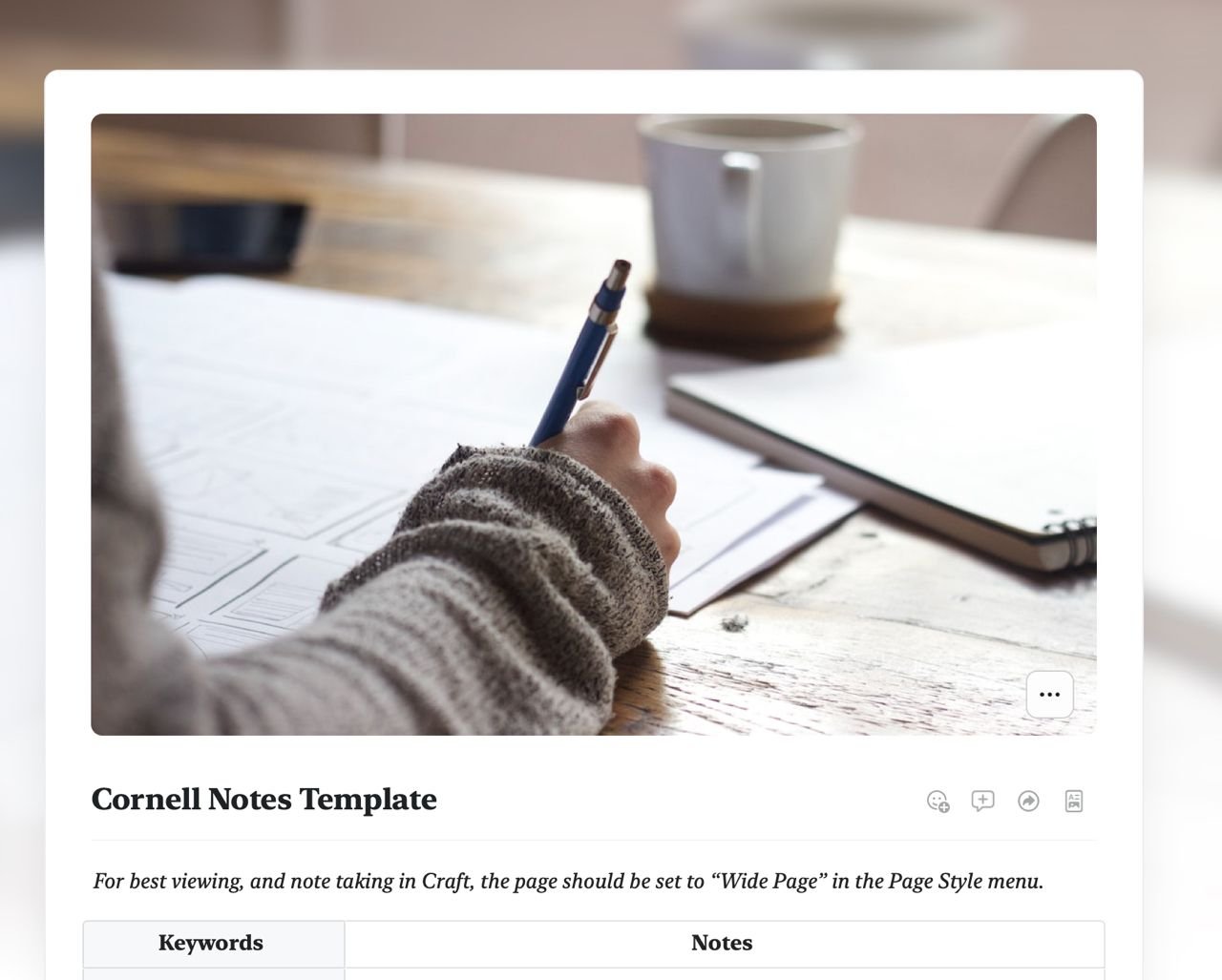Cornell note-taking method
Discover the Cornell note-taking method and elevate your note efficiency. Ideal for students, professionals, and thinkers seeking clarity.

What is a Cornell note-taking template?
The Cornell note-taking method is a systematic format for condensing and organizing notes. It involves dividing a page into three sections: keywords (or cues), notes, and summary, which help in jotting down main ideas, details, and summaries, respectively.
Community member Johanna Sneed created this fantastic Craft template. She says: “By using this Cornell note-taking method template, I have found that I can better understand the material, retain information more effectively, and prepare for exams and assignments more efficiently.”
When to use a Cornell note-taking template
The Cornell note-taking template is perfect for any situation that demands active engagement and effective comprehension. Whether you're participating in an in-depth meeting or an enlightening class, this template is ideal for jotting down and later recalling important points.
In a meeting environment, this method assists you in noting down key ideas and details, ensuring you never miss out on important discussions or action items. The structure allows you to easily segregate the points discussed and follow up efficiently post-meeting.
In a classroom scenario, the template acts as your comprehensive guide for capturing crucial information from lectures. Not only does it aid in jotting down the lecture content, but it also allows you to create prompts for self-study and exam revision, fostering a deeper understanding of the topics.
How to use a Cornell note-taking template
The Cornell note-taking template is divided into three sections:
1. Notes: The largest section, located on the right, is where you jot down the main content from the meeting, lecture, or study session. Here, you record the key points, details, or explanations in real-time. Taking notes with the Cornell method helps you focus on the essential concepts and enhances your ability to discern important information from supporting details.
2. Keywords: This narrow column on the left is for keywords, questions, or prompts that summarize or represent the main ideas from your notes. These cues serve as triggers when you revisit your notes, prompting recall and facilitating review. They're best added during or after the note-taking process, offering an at-a-glance overview of the topic.
3. Summary: Located at the bottom of the page, this area is dedicated to summarizing your notes. After your note-taking session, synthesize the main ideas from your notes and cues into a concise summary. This consolidation activity reinforces your understanding of the topic and aids in long-term retention. You can even use Craft's AI Assistant to summarize the notes for you if you want a quick way to get a digestible summary.
Benefits of using the Cornell note-taking method
1. Enhanced comprehension: By dividing notes into cues, main notes, and a summary, the Cornell method encourages active engagement with the material. This helps reinforce understanding, supports recall, and improves your ability to grasp complex concepts.
2. Efficient review: The structure of Cornell notes makes it easy to review key points without wading through pages of notes. The cues serve as triggers, and the summary provides a quick refresher, making review sessions more effective and less time-consuming.
3. Collaborative potential: When used in a digital format like Craft Docs, the Cornell method turns into a powerful collaborative tool. It allows teams or study groups to work together on notes, share insights, and collectively enhance understanding.
Start elevating your note-taking today
Ready to transform the way you take notes and retain information? The Cornell note-taking template is waiting for you. Whether you're a student striving for academic excellence, a professional keen on making meetings more productive, or someone simply looking to organize thoughts more effectively, this template is your go-to solution. Start your journey towards clearer, more effective note-taking today!
More Templates


